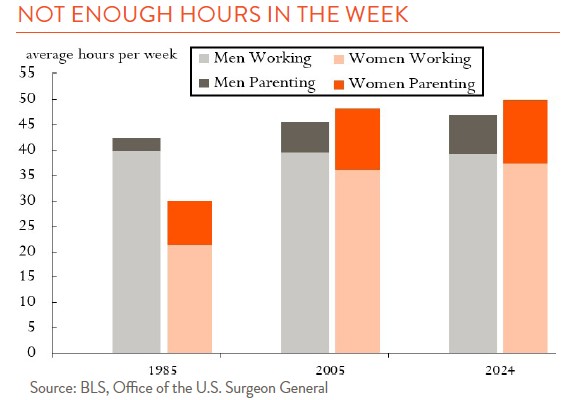“Authoritarian,” “Free Range,” “Gentle” – these are not the names of professional race horses, but rather a small sample of the parenting styles available today in the information age.
In investing, certain styles move in and out of favor over time. So, too, in parenting. Indeed, the Silent Generation and Baby Boomers among us may be scratching their heads at what the kids, in this case young parents, are doing these days. Please allow me to shed some Millennial light on the subject.
My own upbringing occurred during the waning days of harsh punishment and authoritarianism and the waxing days of emotional intelligence. I still had threats of spanking and soap in the mouth, and plenty of “because I said so,” but also lots of praise, support, and communication. Now, as I raise my own children in the internet age, I am met with a torrent of information on how—and how not—to parent.
The pressure to engage constantly and manage the lives of our children is enormous. It’s gotten so bad, that the U.S. Surgeon General released an “urgent public health” Advisory on the mental health of parents. To put some numbers behind it, according to the “American Time Use Survey” from the Bureau of Labor Statistics, men are parenting nearly three times as much as they did in 1985 (from a low level), but the change has been even more drastic for women, who are parenting 50% more while working 75% more hours (see chart below).

And it’s not just volume, the pressure to do things the “right” way is overwhelming as parents confront the barrage of advice coming across their news feeds daily. “Gentle parenting” is one style that has bubbled to the top with my generation. Shedding the harsh parenting ways of old that relied on shame and the threat of punishment, gentle parenting is meant to teach and nurture children through calmly laid out logical consequences and clear boundaries. Well, it sometimes works. It depends on your child, and it depends on the situation.
The Wall Street Journal recently ran an article on how many parents are becoming fed up with this gentle parenting and opting for a more brash, “mess around and find out” approach (note, to protect the sensibilities of our readers I have substituted “mess” for the original four-letter word). The idea here is to have a light touch and shift the consequences from logical to “natural” – to let kids experience what happens when they behave a certain way. The thesis behind this style is that the best lessons in life may sometimes be the hardest. Sage wisdom, it would seem.
The mess-around-and-find-out approach is a recognition that parenting styles have to work for both kids and parents. Of course, this isn’t new. Effective parenting has always required carefully combining the norms of the day with what makes sense given your family’s (and children’s) individual needs and context. And no matter the pressure to conform to the latest style, no one has the same lived experience, and the distribution of what is “normal” for kids is wide. Parents are the only ones with all the data on their own child.
While this may seem obvious, especially to seasoned parents, it’s also important. Parenting styles have a hand in shaping kids, their values, and emotional health. That matters for cultivating engaged and contributing citizens and can have echoes in generations to come.